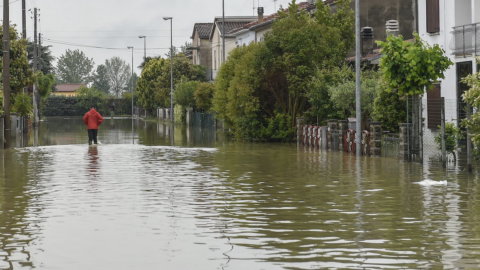Energy efficiency is an incredible driving force for the green restart of the country. There is a need for interventions, there are the necessary skills to implement them and there are also the resources: however, there is no clear and long-term regulatory framework that facilitates the implementation of projects by giving operators certainties.
These are in summary the conclusions of the CESEF 2020 Report of Agici Finanza d'Impresa, presented on Tuesday in the seventh Workshop, divided into several round tables in which Claudia Canevari (DG Energy, European Commission), Luca Barberis (GSE), Roberto Piccin (Cesi), Fabio Grosso (Enel X), Giorgio Fontana (Eni gas and electricity), Gianluca Zonta (Renovit), Francesco Campaniello (Terna-Avvenia), Filippo Stefanelli (Acea), Enrico de Girolamo (CVA), Cristian Fabbri (Hera), Alessandro Cecchi (Iren), Evarist Granata (ACP SGR), Massimiliano Braghin (InfinityHub), Luca Matrone (Intesa Sanpaolo) and Francesco Maggi (Foresight) with Andrea Gilardoni and Stefano Clerici (CESEF).
“We believe that the sector can be the fulcrum of the country's relaunch after the pandemic,” he explained Stefano Clerici, Director of CESEF. “Energy efficiency is central to European and national decarbonisation policies and this guarantees abundant economic resources both public (Next Generation EU, incentives, etc.) and private, with institutional investors increasingly oriented towards investing in the sector. But resources alone are not enough to guarantee investments, we also need rules that define a stable long-term framework for the companies that have to carry out the projects".
Certainly the pandemic has slowed down, if not blocked – for example in industry – investments. In SMEs, little or nothing has been done. In the residential sector there are over 270 buildings that have a high potential for energy and anti-seismic redevelopment. Let's not talk about the Public Administration: 70% of schools in Italy have not received any type of efficiency improvement intervention, as reported in the Recovery plan which, not surprisingly, allocates about 25% of Next Generation EU resources to energy efficiency. 'Italy, that is 54 billion euros. These are flanked by the funds already envisaged by European programming (ERDF, ESF and ESIF), the Horizon funds and specific funds for Energy Efficiency (ELENA), but also the incentives envisaged at national level (Eco-Sismabonus, White Certificates, Thermal account, FNEE, etc.).
A mountain of resources is therefore waiting to be spent and generate employment. The market, notes the Cesef 2020 report, has gradually consolidated as demonstrated by “the drop in debt to banks: -32% in 2019. The trend, albeit less intense, continued in 2020 despite the pandemic. In the last 18 months there have been 5 M&A operations between energy utilities and operators and small specialized ESCos. Furthermore, it is emerging the trend of joint ventures between large energy efficiency operators and financial investors, such as Renovit (Snam, CDP) and Cogenio (Enel X and Infracapital)”. There is therefore no shortage of national champions capable of putting significant volumes of investments on the ground.
To support operators, more and more institutional investors are entering the sector. CESEF – reports the Agici press release – “through direct interviews with 9 of the main EU institutional investors, with €35 billion of assets under management, one of which dedicated exclusively to EE, has identified the 6 prevailing models: Securitisation, Mezzanine Finance, Joint Venture, Equity Crowdfunding, Lending Crowdfunding, Project Green Bond. The main advantages for the sector are the aggregation of small interventions, the separation between operator risk and project risk, increased synergies between the lenders' resources and the operators' know-how, pool financing”.
And here we come to the sore points. “To slow down the concrete grounding of projects there are a number of old and new regulatory and regulatory issues. Firstly, according to Clerici: "The PNRR must better select the projects to be encouraged, through an assessment of the impacts on energy consumption and emissions and must be more consistent with national (such as the PNIEC) and European energy policies".
Furthermore, it is necessary to structure more and where necessary reform incentive mechanisms.
Il Super bonus 110%, for example, it is an extraordinary measure and particularly appreciated by the operators, but as emerges from the monitoring carried out by CESEF, "in the first six months of operation, only 7% of the interventions requested had overcome the stumbling block of the shareholders' resolution and only 0,3 % was already finished”. In the opinion of the research centre, it would be necessary to extend its duration and reduce the excess bureaucracy that accompanies the Superbonus.
The mechanism of Finally, White Certificates must be reformed as soon as possible. In particular, during the Workshop it emerged that operators are clamoring to publish the awaited decree on TEEs, above all for the benefit of the industrial sector. Finally, the PA funnel must be resolved by imposing efficiency obligations for public administrations without forgetting the essential need for a reduction and reorganization of existing regulations (including and above all those relating to tax incentives) in a single Consolidated Text which ensures execution and faster deployment.
Finally, to definitively unlock the enormous economic, environmental and social benefits associated with investments in energy efficiency, we must at least activate demand by imposing efficiency obligations for the PA and for energy-intensive industries, define a Consolidated text for EE in the residential sector that collects, reorders and simplifies the regulatory corpus of all forms of tax deduction, develop a system of financial and technical guarantees, to attract additional private resources to the sector.





